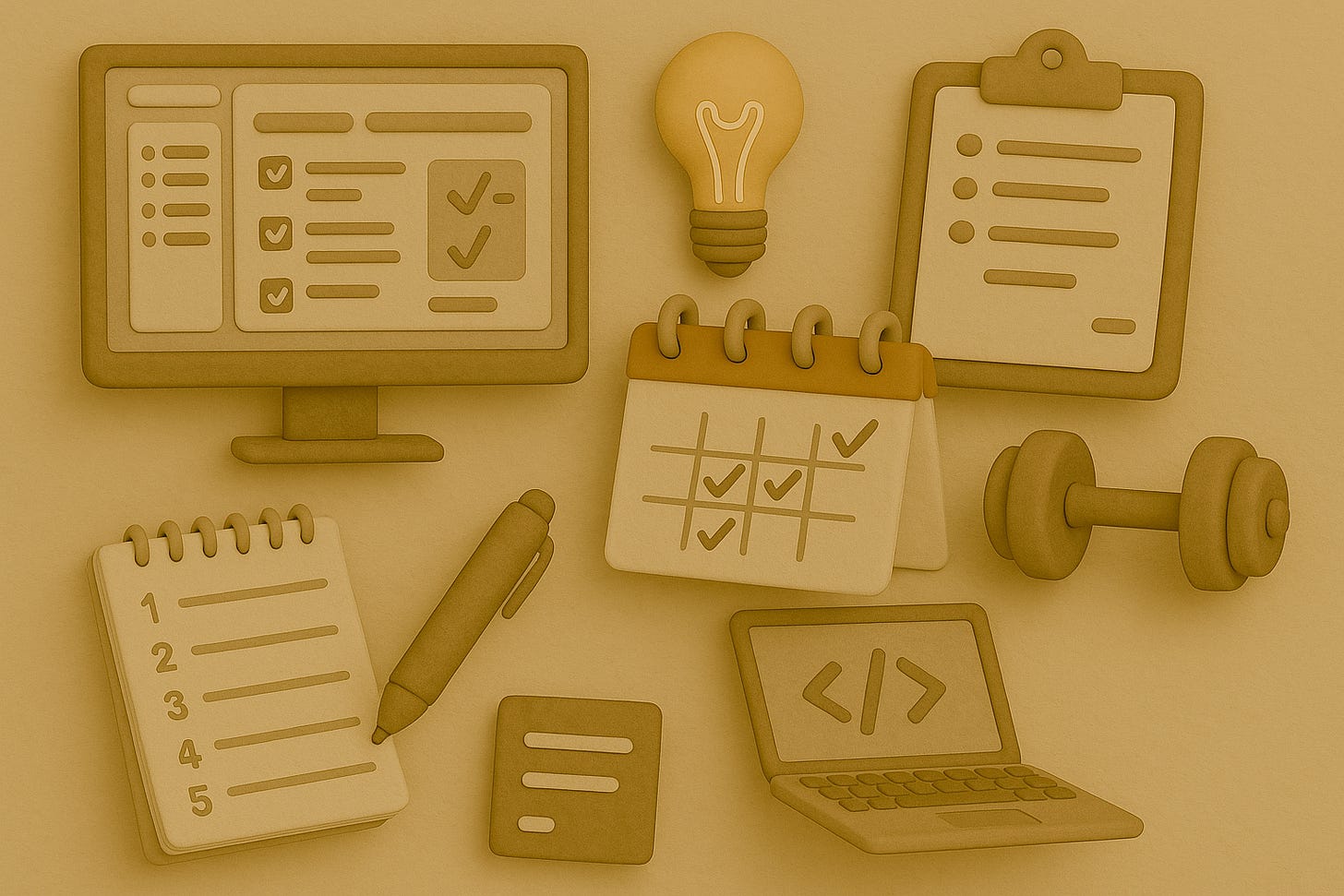Maximizing Productivity: My Personal Setup and Strategies
Why Frictionless Design Wins Over Motivation
Ever since I began juggling full-time university studies with full-time work, I knew I had to get serious about productivity.
The topic has always fascinated me. Personally, I define productivity as output per unit of time, and I believe there are numerous tools and tactics we can use to enhance that.
Here’s my current productivity setup, including both physical tools and mental models that help me achieve more in less time. Let’s dive right in.
My Daily Schedule
At the moment, my daily schedule includes software engineering work, university study, Japanese learning, gym sessions, cooking and healthy eating, reading, writing this newsletter, and socializing.
It’s a packed schedule, but I’ve found ways to manage it effectively.
The Core of My System
Here’s how I structure my days to consistently move forward:
Start with one thing
Use deep work sprints
Keep reading with a 7-day free trial
Subscribe to Output Theory to keep reading this post and get 7 days of free access to the full post archives.



